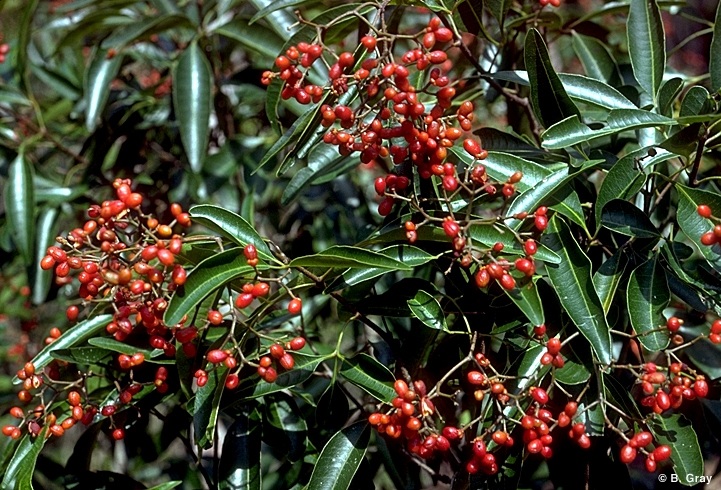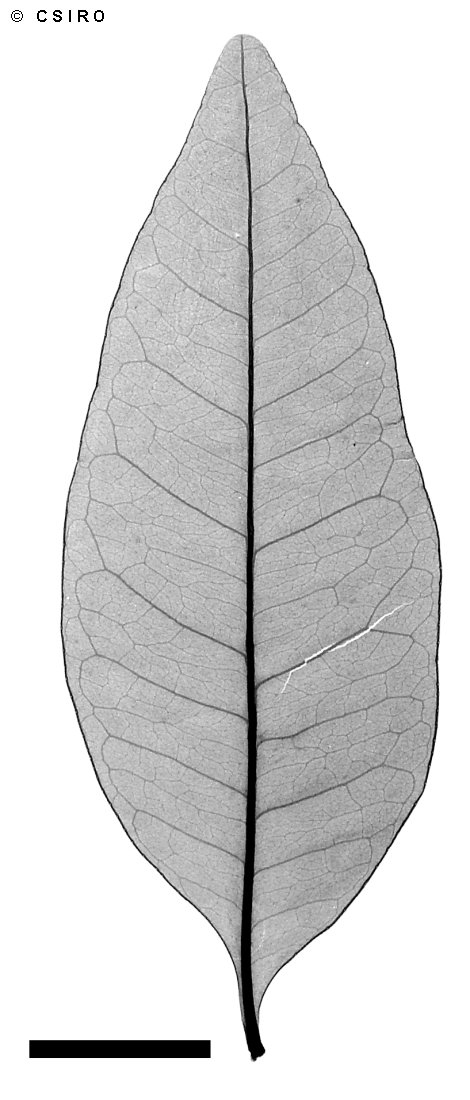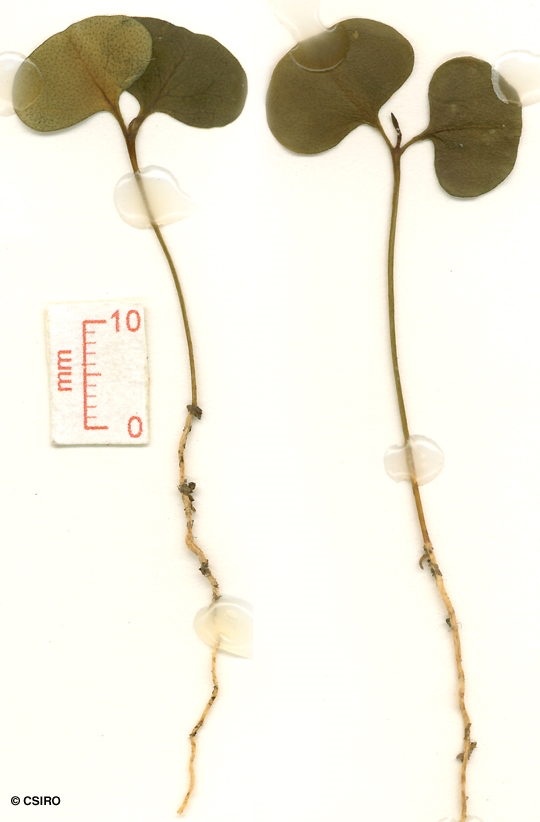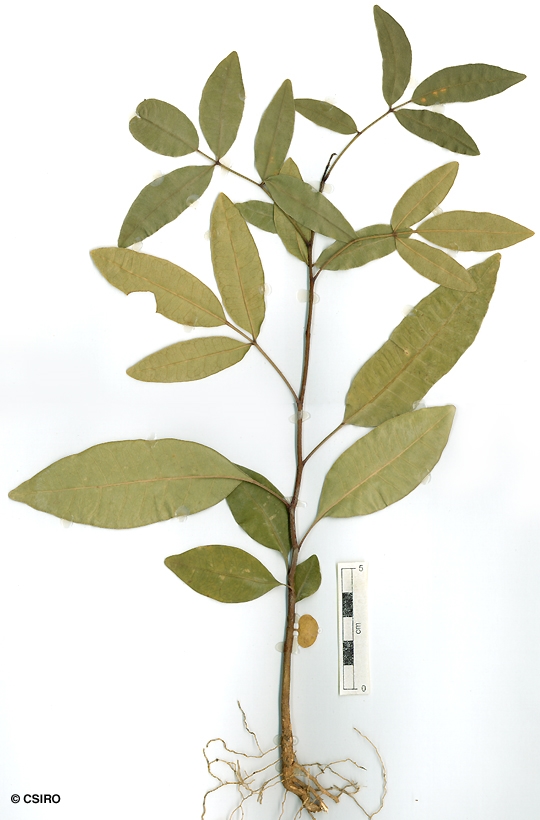Australian Tropical Rainforest Plants - Online edition
Dinosperma erythrococcum (F.Muell.) T.G.Hartley




Hartley, T.G. (1997) Adansonia Ser. 3 19: 196.
Clubwood; Tingletongue
Tree to 23 m tall. Bark, when chewed, produces a peculiar tingling or numbing sensation in the tongue and lips. WARNING - Be careful of this test. If a different species is involved it may be toxic.
Leaflet blades about 7.5-8.5 x 2-3 cm, leaflet stalks about 0.1-0.7 cm long. Stalk of the terminal or middle leaflet much longer than those of the lateral leaflets. Leaflets aromatic when crushed. Leaves, when chewed, produce a peculiar tingling or numbing sensation in the tongue and lips. WARNING - Be careful of this test. If a different species is involved it may be very toxic.
Inflorescence usually exceeding the leaves. Calyx lobes about 1 mm long, gland dotted. Petals puberulent, about 3-3.5 mm long. Stamens eight, +/- uniform in length. Staminal filaments about 2-3 mm long, hairy, at least the lower half. Disk enclosing the lower half of the ovary. Style about 1 mm long, sparsely pubescent in the lower half.
Cotyledons reniform, about 12-15 mm wide. Oil dots numerous, visible with a lens. Several simple leaves produced before the first compound leaf. At the tenth leaf stage: leaf simple or compound, glabrous; oil dots may be just visible to the naked eye. Seed germination time 10 to 18 days.
Endemic to Australia, occurs in CYP, NEQ, CEQ and southwards to north-eastern New South Wales. Altitudinal range from 50-750 m. Grows in monsoon forest and drier, more seasonal rain forest often associated with Kauri Pine (Agathis robusta).
Food plant for the larval stages of the Orchard Butterfly. Common & Waterhouse (1981).
A handsome tree that occurs in drier rain forests. It has potential for use in tropical gardens.





